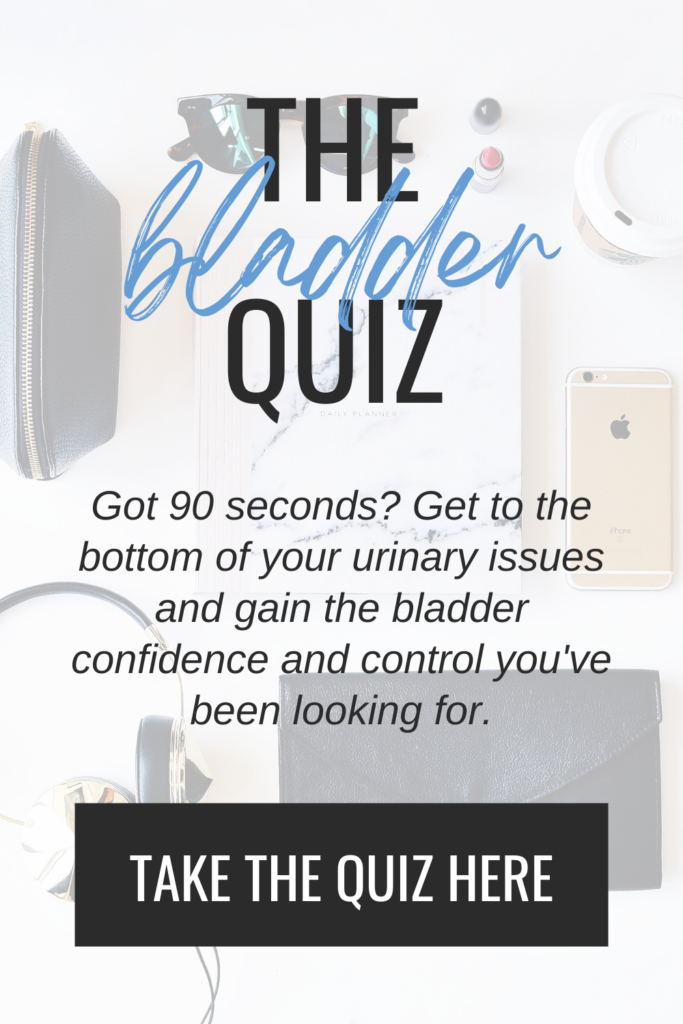Whenever I talk about posture, I can literally hear my mom telling me to stand up straight and still viscerally *feel* the annoyance those words of advice used to bring. If that happens to you too, I’m sorry, friend…but posture really is an important piece to the pelvic health puzzle and worth the bit of discomfort those memories may provoke.
All eye rolls aside, posture is one of the first things I talk about with my patients for many reasons, so if you’re new to all things pelvic & women’s health, you’re in the right place! This concept is easy to understand, ridiculously accessible to practice and perform (I’m talking little to no time, energy, money, or equipment required #bless), and provides quick wins for bladder, bowel, and sexual pain and dysfunction. In a nutshell – posture is the epitome of everything I love about pelvic floor rehab!
Unfortunately, pelvic posture doesn’t get the airtime it deserves and often sits in the shadows of kegels, bathroom habits, and core strengthening. But just like most things in health, less is more, and the best results are often found in bringing it back to the basics. In the name of cutting the fluff, finding clarity, and moving forward with confident action, lets dive deeeeeeep into posture for pelvic health so you have the *perfect* place to start your healing journey TODAY.
All things pelvic posture
When most of us hear “good posture”, we immediately stand up straight and pull our shoulders back (cue the legendary bend & snap from Legally Blonde). And while ^^that^^ posture most definitely matters too, pelvic position is what I’m talkin’ about [here]. From how you sit in the car to stand in the kitchen to carry your baby to work out, you ~must~ be mindful of where your pelvis sits in space and understand how that affects the muscles in and around it.
Picture your pelvis like a bowl filled with water…and fish! That fishbowl needs to stay on a flat, horizontal surface to keep the water and fish in the bowl, right!? In the same way, a neutral or level pelvis is optimal for pelvic health. If the pelvis leans too far forward (anterior pelvic tilt) or backward (posterior pelvic tilt) or consistently orients to one side (lateral pelvic tilt), there will be a change in muscle length and tension, and ultimately affect pelvic floor function. AKA – the water and fish will fly right outta the bowl.

Let me be clear…performing anterior, posterior, and lateral pelvic tilts are a necessary part of everyday life. But neutral pelvic posture – ribs stacked on pelvis, pelvis stacked on knees and feet– is where the body is strongest, happiest, and healthiest, and where I want you to find yourself more often than not.
HOW TO FIND PELVIC NEUTRAL (IN 5 SECONDS OR LESS ;))
1. Get in a comfortable sitting or standing position, even weight between your butt bones or feet, hands on your hips for a little extra feedback.
2. Put your pelvic in an anterior pelvic tilt as far as it will go (weight forward, butt out the back). Then put your pelvis in a posterior pelvic tilt as far as it will go (weight backwards, tail tucked).
3. Continue moving your pelvis back and forth between an anterior and posterior pelvic tilt, but with smaller excursion each time. Move forward and back less and less until you reach the middle point between an anterior and posterior pelvic tilt.
4. The hands on your hips should be parallel with the floor. Your core and glutes should feel engaged but not tight. Your weight should be right down the center of your body.
5. You’ve just found pelvic neutral. Yay!!!
6. This will get easier and easier to find over time, requiring less back and forth until you’re able to find that magical middle called a “neutral pelvis” in .00005 seconds flat. Until then, keep practicing with this technique until it feels normal and natural.
Causes of poor pelvic posture (& how to fix them)
If finding pelvic neutral feels awkward or maintaining good posture is difficult…you’re not alone. There are so many reasons – both in your body and background environment – that a neutral pelvic posture doesn’t come naturally. Knowing these contributing factors can help you not only identify where your poor pelvic posture is coming from, but also the best place to start correcting the underlying cause.
MUSCLE WEAKNESS
Sustaining good pelvic posture requires muscles strength, specifically of the core and glutes. Weakness in either of these areas makes it not only difficult but nearly impossible to keep the trunk stacked on the pelvis, and an anterior or posterior pelvic tilt is likely to occur. If finding pelvic neutral feels easy for you but maintaining it for an extended period of time is hard, [this] is likely your issue, and core and hip strengthening exercises are the best place for you to start.
MUSCLE TIGHTNESS
Opposite of weakness but still just as powerful, muscle tightness can also contribute to poor pelvic posture. Tension in the back or front of the legs or trunk can pull the pelvis forward or backward. If you feel like you’re fighting your own body to find pelvic neutral, [this] is likely your issue and where you should begin putting your effort and energy. Grab this FREE guide filled with my favorite stretches and muscle relaxation techniques to begin addressing the above today.
RELATED POST: 19 Reasons You Have a Tight Pelvic Floor (Plus…What to Do About It)
RELATED POST: My Daily Pelvic Floor Relaxation Routine & Why You Might Want to Try It Too
LIFESTYLE & ENVIRONMENT
Computer work, cell phones, long commutes, Netflix…many of the world’s current technologies and conveniences aren’t doing our pelvic posture any good. Maintaining neutral pelvic posture with prolonged standing and (especially) extensive sitting requires significant muscle strength and endurance, and falling into an anterior or posterior pelvic tilt is inevitable after being in one position for too long. When possible, try taking a stretching/walking/squatting break at least once an hour to reset your posture and keep the pelvis moving.
LACK OF AWARENESS
You’re busy…I’m busy….we’re allllllllll busy….so it’s no surprise posture takes a back seat to life’s routines and responsibilities. This is something you’ve gotta tune unto regularly to make a difference. In order to keep posture top of mind, I recommend setting a cue – every time your email dings, phone rings, or someone says your name – let that be your reminder to reset neutral pelvic posture with the technique above.
Thankfully, perfect posture 100% of the time isn’t required or expected. But the stronger, more flexible, and aware you can become, the easier it will be. Think of pelvic posture as the perfect opportunity to practice making your health a priority, no matter how crazy life gets.
Benefits of improving your pelvic posture
Remember when Oprah used to give out free stuff to her studio audience? “You get a car, YOU get a car, YOU GET A CAR!” she’d shout, and the crowd went wild. Now let me be clear…no one’s getting a car here, but I kiiiiiiinda feel like Oprah knowing all the pelvic health benefits you’ll get simply by working on your posture.
RELAXED PELVIC FLOOR MUSCLES
We’ve already established that the pelvic floor is happiest and healthiest in the neutral position, and this is because it allows the pelvic floor muscles to sit completely relaxed. Pelvic floor tension can lead to pelvic pain, weakness, and dysfunction; therefore, keeping a neutral pelvis helps relieve pelvic pain, pain with sex, period pain, constipation, endometriosis and PCOS-related pain, urinary urgency, frequency, and nighttime urinating.
PELVIC FLOOR STRENGTH & CONTROL
Fun fact – muscles are strongest in their mid range. This is why we instinctively bend our elbow to 90 degrees before loading our arms with groceries and hulk them into the house in one (impressive, I might add) trip. Keeping the pelvis in its neutral position places the pelvic floor muscles in its mid range and promotes pelvic floor strength and control, aka less leakage, fewer prolapse symptoms, and better orgasms.
RELATED POST: 5 Reasons Kegels Aren’t Working For You
BACK & HIP PAIN RELIEF
EV-ERY-THING in the body is connected, and it’s not too hard to see that the back and hips are directly attached to the pelvic floor. Poor pelvic posture places stress on the back and hips, and surprise, surprise…pain can occur. If you’ve tried everything for your back and hips but nothing’s worked (and especially if you also have symptoms of pelvic floor pain, weakness, or dysfunction), consider focusing your efforts on your pelvic posture and health.
My final thoughts on posture for pelvic health
Good news (!!!), perfection isn’t required or expected when it comes to proper posture for pelvic health, so throw that stress out the door, friend. Simply understanding the neutral pelvis concept is a great start; from there, mindfulness is really all you need. Once you’re a pro at finding pelvic neutral (scroll above for my four-step, five second process to do so), you…yes YOU…will naturally adopt it as your new normal.
The more you stretch, the stronger you get, the more aware you become, the simpler neutral pelvic posture will become to the point that you do it without even realizing, and your bladder, bowel, and sexual health follows.
Very few things bring me more joy than making pelvic health easy, accessible, and realistic to women everywhere. Pelvic posture is the peak…pinnacle…epitome of this sentiment (aka, it doesn’t get any easier!) and I hope the benefits you experience from this small change leaves you excited for the next step…which I’m also right here to help you take.
– Amanda
Disclaimer: The content provided here does not constitute medical advice, nor is it a substitute for personalized healthcare. I’m a doctor, but I’m not your doctor. If you have concerns about a medical condition, diagnosis, or treatment, you should consult with a licensed healthcare professional.



















